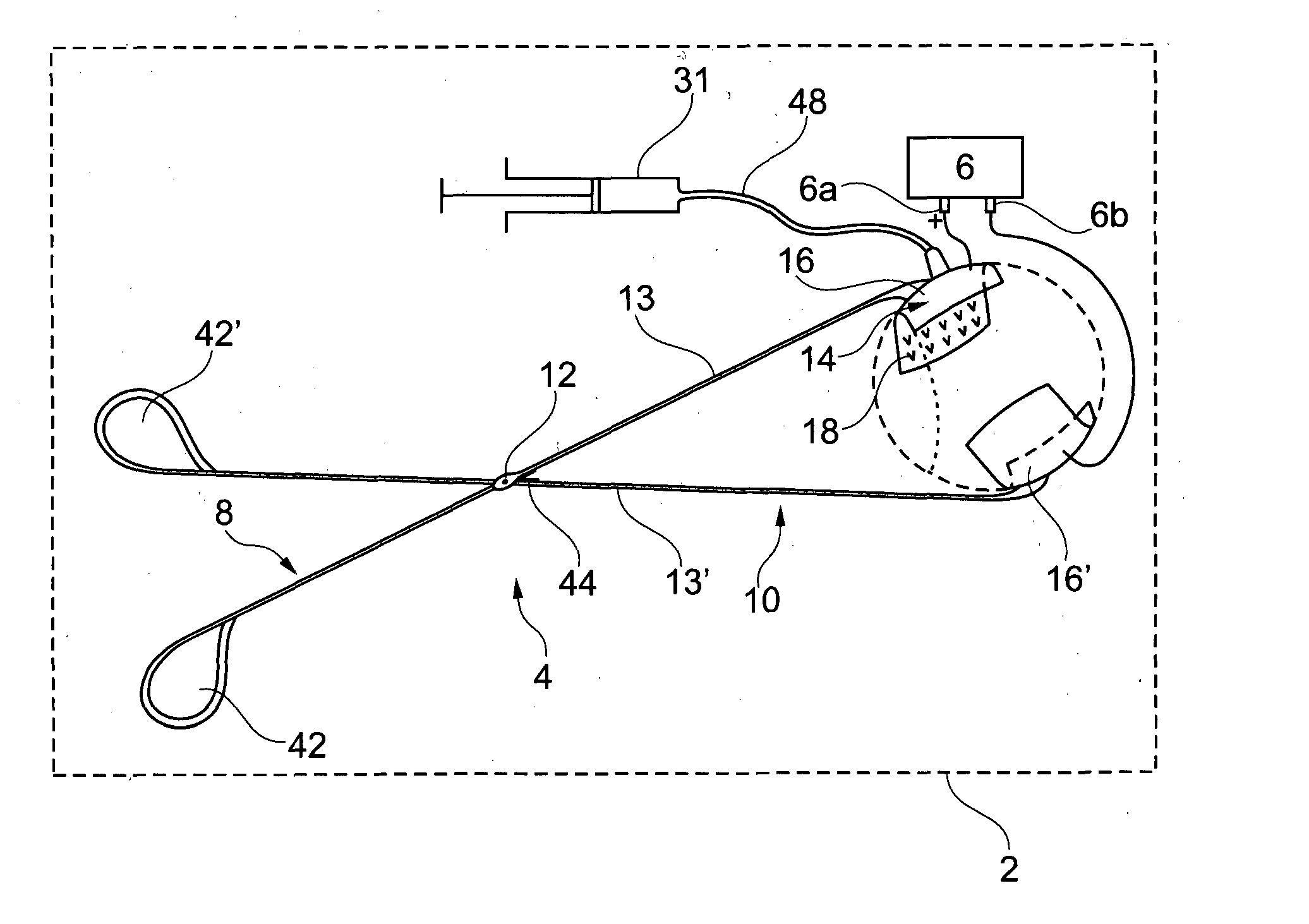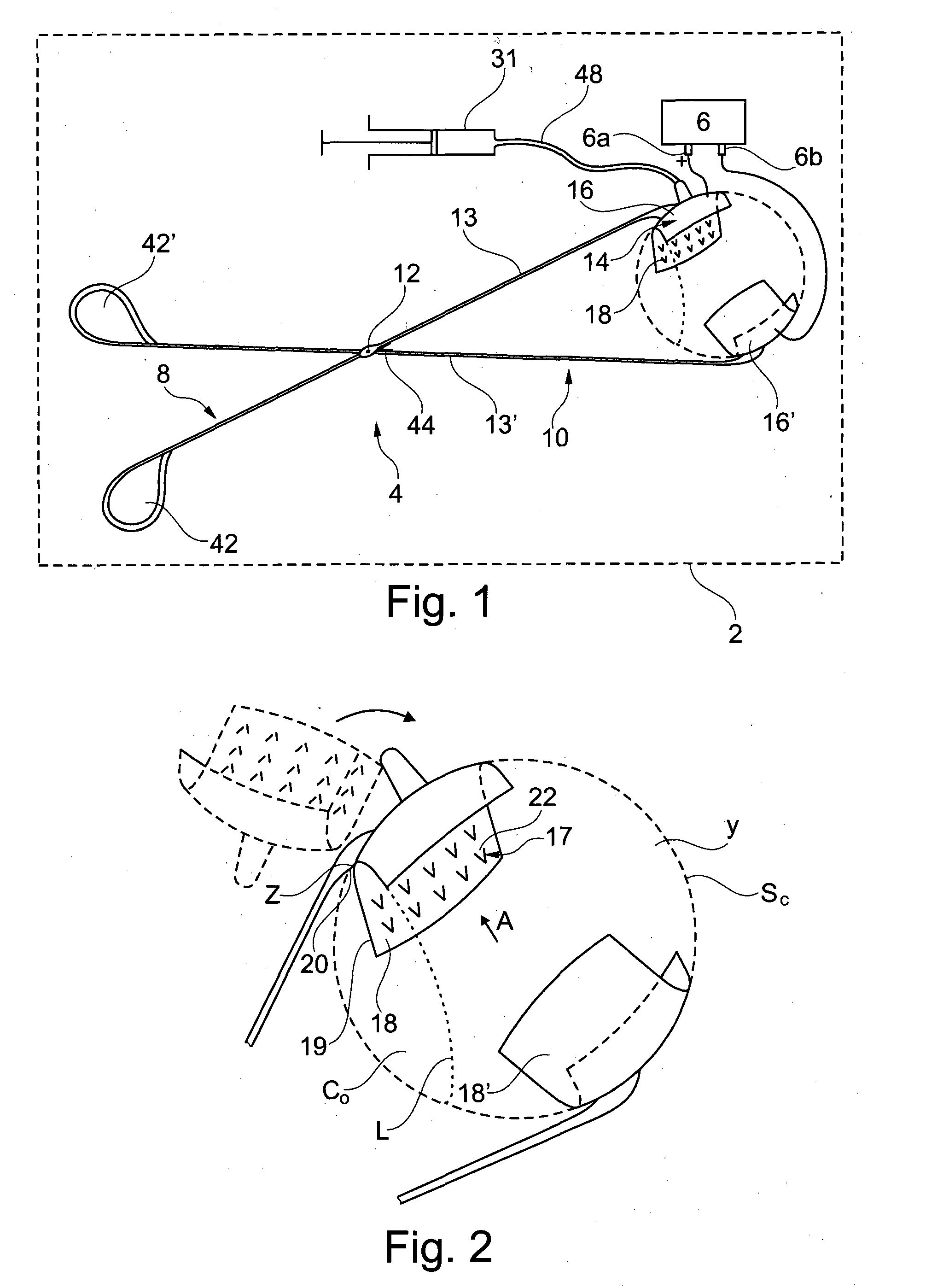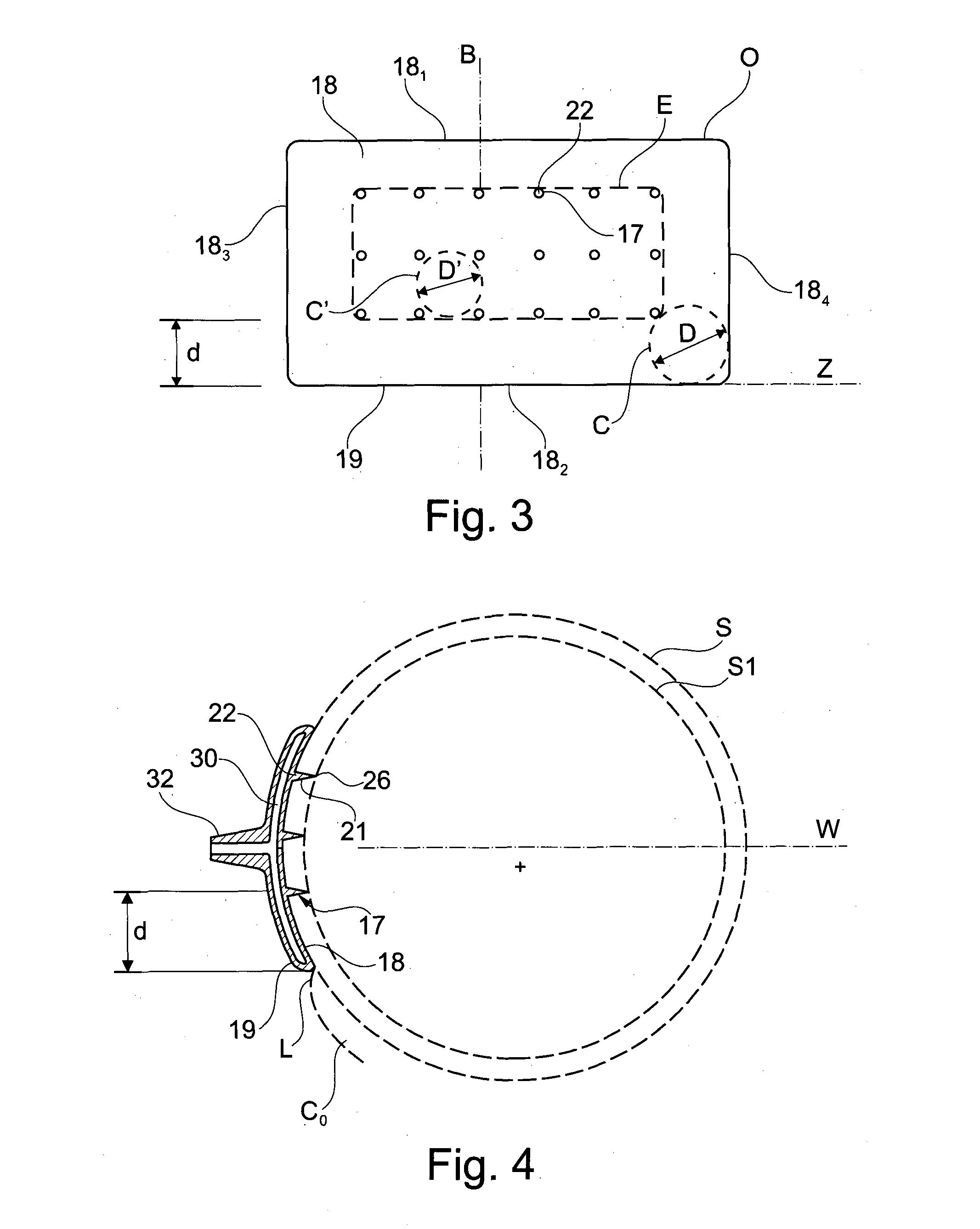Device for the treatment of an ocular disease
a technology for ocular diseases and injection devices, which is applied in the direction of pump control, internal electrodes, therapy, etc., can solve the problems of poor vision recovery after retinal detachment, poor treatment effect, and inability to ensure that submacular injection is not risky, and achieves the effect of efficient electroporation
- Summary
- Abstract
- Description
- Claims
- Application Information
AI Technical Summary
Benefits of technology
Problems solved by technology
Method used
Image
Examples
Embodiment Construction
[0071]The electroporation device 2 shown in FIG. 1 comprises a scissor-like injection device 4 according to the invention, and an electrical generator 6.
[0072]As shown in FIGS. 2 and 3, the injection device 4 comprises a first arm 8 and a second arm 10, rotationally mounted on the first arm 8, around an axis 12. The first arm 8 and the second arm 10 are used as first and second electrodes of the electroporation device 2, respectively, the first arm being also used for the injection.
First Arm
[0073]The first arm 8 comprises a first proximal part 13, and a first support 14, preferably made of a conductive material, presenting a first cup 16 provided with a set of injection needles 17.
[0074]The first support 14 is rotationally mounted on the first proximal part 13 around an axis Z. The axis Z is substantially perpendicular to the general direction of the injection needles 17.
[0075]The distance between any injection needle 17 and the axis Z is preferably more than 4 mm, preferably more t...
PUM
 Login to View More
Login to View More Abstract
Description
Claims
Application Information
 Login to View More
Login to View More - R&D
- Intellectual Property
- Life Sciences
- Materials
- Tech Scout
- Unparalleled Data Quality
- Higher Quality Content
- 60% Fewer Hallucinations
Browse by: Latest US Patents, China's latest patents, Technical Efficacy Thesaurus, Application Domain, Technology Topic, Popular Technical Reports.
© 2025 PatSnap. All rights reserved.Legal|Privacy policy|Modern Slavery Act Transparency Statement|Sitemap|About US| Contact US: help@patsnap.com



